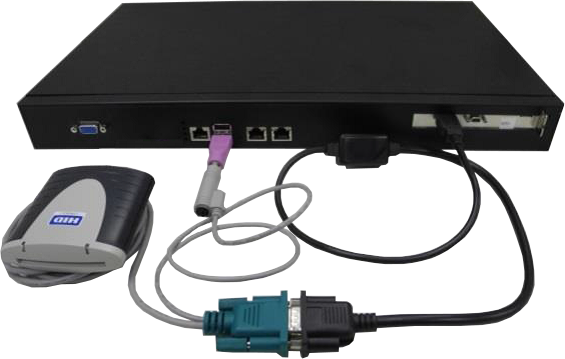Installing the ProtectServer External 2 Hardware
Since the ProtectServer External 2 is delivered with the necessary software pre-installed, no software installation is necessary on the unit itself.
After installation, confirm that the unit is operating correctly and configure the network settings. These steps are covered in First Login and System Test and Network Configuration.
To install the hardware
1.Choose a suitable location to site the equipment. You can mount the ProtectServer External 2 in a standard 19-inch rack.
NOTE The power supply cord acts as the unit's disconnect device. The main outlet socket to which the unit is connected must be easily accessible.
2.Connect the ProtectServer External 2 to the network by inserting standard Ethernet cables into the LAN connectors located on the unit's front face (labelled eth0 and eth1). The client machine(s) with SafeNet cryptographic API software installed should be hosted on the same network.
NOTE The ProtectServer External 2 is equipped with two NICs (eth0 and eth1) incorporating an IPv4/IPv6 dual stack, allowing you to configure both an IPv4 and IPv6 address on each interface. If you intend to use both NICs, connect Ethernet cables to both LAN connectors.
3.Connect the power cable to the unit and a suitable power source. The ProtectServer External 2 is equipped with an autosensing power supply that can accept 100-240V at 50-60Hz.
Smart Card Reader Installation
The unit supports the use of smart cards with a Thales-supplied smart card reader. Other smart card readers are not supported.
The ProtectServer External 2 supports two different card readers:
>the new USB card reader (introduced in 5.2)
>the legacy card reader, which provides a serial interface for data (via a USB-to-serial cable) and a PS/2 interface for power (direct or via a PS/2 to USB adapter)
To install the USB card reader
Simply plug the card reader into the HSM USB port, as illustrated below.

Installing the legacy card reader
To install the smart card reader, connect it to the HSM USB port with the included USB-to-serial cable.
The legacy card reader must also be connected to a PS/2 port for its power. Many newer servers have USB ports, but do not provide a PS/2 connection.
If there is no available PS/2 connection, there are two options:
>Connect a PS/2-to-USB adapter (pink in the image below) between the card reader and a USB port on the ProtectServer External 2.
>If, for security reasons, you prefer to not expose USB ports on your crypto server, connect a PS/2-to-USB adapter cable between the card reader and a standalone powered USB hub. It should be noted that the USB connection is for power only. No data transfer occurs.

Next, see First Login and System Test.
